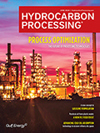Decarbonize the FCCU through maximizing low-carbon propylene
As the global energy system continues to be threatened by geopolitical tensions, the refining industry continues to demonstrate an outstanding capacity for adaptation.
IP: 3.149.25.73
The Authors
Bescansa, M - W. R. Grace, Spain
María Bescansa Leirós is a Technical Sales Manager for Grace FCC and ART Hydroprocessing, covering Spain, Portugal and parts of Romania within Grace’s Europe, Middle East and Africa region. She has 19 yr of experience in the refining industry, previously working at the Repsol La Coruña refinery in northwest Spain. Leirós has held various roles within Repsol, most recently in the FCC area, but always related to catalytic processes. She led the team that developed the first ISO 50001 awarded to a refinery. In Spain, she earned an MS degree in chemical engineering from the Universidad de Santiago de Compostela, along with an MBA degree from the Universidad Nacional de Educación a Distancia.
González, R. - W. R. Grace, Spain
Rafael González Sánchez is the Regional Marketing Manager, Asia-Pacific and India, for Grace. A chemical engineer, he has more than 17 yr of multidisciplinary experience in catalyst design and development, technical services, account management and marketing. Dr. González joined Grace as a research and development researcher, leading new FCC catalyst and ZSM-5 additive developments. He then became a Regional Technical Sales Manager prior to joining the marketing team. Dr. González is a co-author of several publications in the FCC industry field. He earned a PhD in engineering and advanced technologies from Universitat de Barcelona, and an Executive MBA degree from the EAE Business School in Barcelona.
Related Articles
From the Archive

 COPYING AND DISTRIBUTING ARE PROHIBITED WITHOUT PERMISSION OF THE PUBLISHER
COPYING AND DISTRIBUTING ARE PROHIBITED WITHOUT PERMISSION OF THE PUBLISHER

Comments